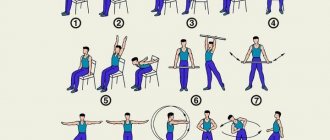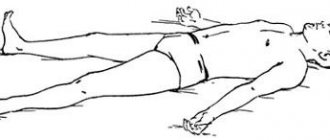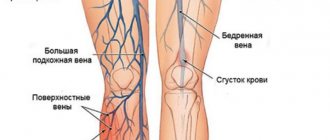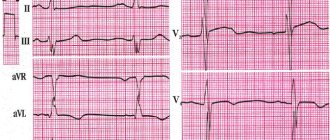The main sign of hypertension or hypertension is elevated blood pressure. Patients with this diagnosis require constant treatment, since hypertension is one of the main causes of mortality.
A sharp rise in blood pressure often provokes heart attacks and strokes. This pathology negatively affects the functioning of the kidneys and heart, and causes irreversible visual impairment. There are many unfavorable factors that can trigger the pathological process, but the main reasons are excess body weight, bad habits and endocrine disorders.
Symptoms of hypertension
In some cases, for a long time, the only symptom of essential hypertension remains an increase in blood pressure.
It may be accompanied by nonspecific complaints of pain in the head (occurs in the morning, like a “heavy head”, localized in the occipital region), irritability, excessive fatigue, sleep disturbances, general weakness, dizziness, rapid heartbeat. A striking sign of the disease is considered to be hypertensive crises - short-term (from 1-2 hours to 2-3 days) exacerbations of the disease, manifested by a sudden increase in blood pressure. They occur in about a third of patients.
There are 2 types of crises in hypertension: first order (adrenal) and second order (noradrenal).
Hypertensive crisis of the first order develops more often in middle-aged people. A rise in blood pressure occurs at night and is accompanied by headache, chills, cold extremities, anxiety, restlessness, and rapid heartbeat.
Second-order hypertensive crisis is typical for older people. A rise in blood pressure is accompanied by severe headache, visual disturbances, lethargy, drowsiness, nausea, and vomiting.
With a long history of hypertension, the leading place in the clinical picture is occupied by symptoms of target organ diseases: chest pain with angina pectoris, shortness of breath, swelling with heart failure, symptoms of a stroke, etc.
Physical activity in arterial hypertension
“Movement replaces many medications, but not a single medicine in the world can replace movement.”
A. Musset
The results of various observations show that in people leading a sedentary lifestyle, i.e. Those who are practically untrained have a 20-50% higher risk of developing arterial hypertension compared to those who lead a more active lifestyle and perform significant muscle loads.
In practically healthy people, physical activity reduces blood pressure by an average of 10 mmHg. Therefore, physical exercise should be used as a non-drug method for the treatment and prevention of arterial hypertension.
The effect of physical activity on the body:
- Blood pressure decreases;
- The contractile function of the myocardium improves;
- The number of heart contractions decreases;
- Vasospasm is reduced;
- Reserve capillaries open;
- Cholesterol decreases;
- The body's defenses are stimulated;
- Mental activity is stimulated;
- Sleep improves;
- Irritability and anxiety decrease;
- Calories are burned, weight is reduced;
- Improves appearance.
In middle-aged and elderly people, in most cases not completely healthy, motor function must be dosed, like any other treatment. The individualized exercise program is safe and enjoyable. Therefore, they require medical supervision. In young people, such control may be minimal (physical examination).
Types of motor modes.
- A gentle regimen includes muscle relaxation and simple gymnastic exercises.
- Gentle training mode:
- walking from slow to fast;
- cyclic gymnastic exercises;
- dosed loads on an exercise bike.
- Training mode.
- fast walking;
- jogging;
- exercise on an exercise bike for up to 30 minutes;
- swimming;
- rowing;
- skiing;
- cyclic gymnastic exercises.
The training effect of physical activity on the activity of the cardiovascular system is optimal for a duration of 20-40 minutes 3-4 times a week or 60 minutes 2 times a week.
Types of physical activity recommended
with arterial hypertension.
- Rhythmic gymnastics classes;
- Jogging;
- Bike;
- Swimming;
- Fast walk;
- Cross-country skiing.
Ball games such as football, volleyball, basketball, tennis and intense gardening are also beneficial, but the effect of these types of movement on stabilizing blood pressure is less pronounced.
The most important training rules.
- Gradual increase in strength and duration of training.
- Regularity of classes.
- Load level control.
The level of physical activity is monitored by heart rate and breathing.
Pulse rate is a reliable indicator of whether the load corresponds to a person’s condition. Normal heart rate is 60-80 beats per minute. It is necessary to measure your pulse at rest, then after dosed physical activity. It is allowed to increase the heart rate by half of the original one.
During activities (running, walking, etc.), you should strive to feel a slight shortness of breath. At the same time, the ability to speak must be preserved. If shortness of breath goes away within 5-10 minutes after stopping the exercise, then this increase is considered satisfactory. If increased breathing persists for more than 10 minutes, this indicates that the load does not correspond to the state of health.
Increased daily activity.
- Walk daily on level ground at a moderate pace for 30-60 minutes.
- Start regular health-improving physical education classes.
- If possible, go swimming.
- You should like exercises and workouts; you need to choose your favorite type of load and exercise.
- We need to find like-minded people to study together.
Let's start carefully, step by step and gradually!
It must be remembered that any violations of a healthy lifestyle (bad habits, poor nutrition, insufficient sleep) can negate the positive effects of physical activity.
Diagnosis of hypertension
In order to confirm a person’s diagnosis of hypertension, it is necessary to identify a persistent increase in blood pressure and exclude the presence of other diseases that are characterized by arterial hypertension syndrome.
An increase in blood pressure is determined using a conventional tonometer - blood pressure is measured by a doctor or the patient himself. An indispensable condition is compliance with the method of measuring blood pressure - the measurement is carried out after 3-5 minutes of rest in a comfortable environment, sitting, at rest, the shoulder and heart should be at the same level. Blood pressure level greater than or equal to 140/90 mm Hg. Art. indicates suspicion of essential hypertension. In diagnostically difficult cases, the technique of 24-hour blood pressure monitoring is used.
Treatment of hypertension in a sanatorium
Against the background of persistently high blood pressure, the work of the heart deteriorates, the blood vessels lose their normal tone, which complicates blood circulation. As hypertension progresses, the kidneys and central nervous system are affected.
Judging by WHO statistics, almost 20% of the world's adult population have problems with blood pressure. The first signs of hypertension usually appear in people after 40 years of age. But recent research by scientists proves that hypertension is rapidly becoming “younger.” Today, this diagnosis is often given to adolescents and very young people under 30 years of age. Moreover, if a person does not receive proper treatment, hypertension will certainly lead to the development of atherosclerosis. Fluctuations in blood pressure can be the root cause of many other life-threatening consequences. Therefore, the treatment of this serious disease must be carried out comprehensively, and therapy must begin at the very initial stages of the disease.
Sanatorium-resort treatment helps to achieve long-term remission. If the patient receives a full course of preventive therapy every year, he will remain able to work for many years and will be able to enjoy life.
Treatment of hypertension
In the treatment of primary hypertension, non-drug and drug methods, which complement each other, are successfully used.
Non-drug methods for treating arterial hypertension
Prescribed to absolutely all patients with hypertension, even if the person is receiving medications to control blood pressure. These measures involve eliminating risk factors by modifying a person’s established lifestyle and habits. Scientists have proven that non-drug treatment in certain cases is not inferior in effectiveness to drug treatment.
Main directions:
- limiting the amount of table salt supplied with food (up to 5-6 g per day). This implies a complete rejection of foods such as sausages, sausages, salty cheeses, canned foods, and salted fish. It should also be noted that a significant amount of salt is contained in baked goods;
- fight against excess weight - people suffering from primary hypertension are recommended to reduce the caloric content of their diet by limiting the consumption of fats;
- limiting the consumption of alcoholic beverages - up to 30 g of ethyl alcohol per day;
- complete and strict cessation of smoking - if necessary, seek the help of a narcologist;
- regular physical activity - moderate, preferably daily, lasting at least half an hour. Outdoor activities are preferred: jogging, brisk walking, cycling.
Rehabilitation for hypertension
Verbal self-suggestion
The patient’s body is controlled by the subconscious and considered health problems as the result of self-hypnosis and destructive imagination. Physiotherapy The main goal of physiotherapy is to induce reflex neurovascular responses that are beneficial to the healing process. For this purpose, magnetic therapy, infrared laser therapy, etc. are used. Only a doctor can select the appropriate method. Physiotherapy has a number of contraindications: blood clotting problems, cancer or third-degree hypertension. In some cases, physiotherapy is not indicated already at the second stage of the disease.
Massage
Massage sessions are recommended at all stages of hypertension, excluding periods of exacerbation. The goal is to normalize the functioning of the nervous system, improve hemodynamics, first of all, blood circulation in the brain and myocardium. For hypertension, massage of the upper back, neck, occipital region, scalp, and anterior chest is recommended. Use stroking and rubbing. In addition to the classic, reflex-segmental and acupressure massage is used.
Healing Fitness
Physical rehabilitation for hypertension involves at least minimal physical activity. Physical exercise improves the nutrition of cells in the tissues of the heart, increases coronary blood flow, and promotes the opening of reserve capillaries. This stimulates recovery processes in the heart muscle. Physical activity improves metabolism, promotes the burning of fat deposits, reduces cholesterol levels in the blood, inhibiting the development of atherosclerosis. To achieve a noticeable therapeutic effect, physical exercise must be performed at least three times a week.
Diet
Complete rehabilitation implies a qualitative change in the diet for hypertension. It should be compiled by a qualified nutritionist.
Drug therapy
Arterial hypertension cannot be cured with a short course of medication, such as an infectious cold or pneumonia. The drugs are prescribed in a continuous course for an indefinitely long time. Full recovery with medication alone is unrealistic. Medicines only suppress symptoms and protect against further complications. In order to be completely cured, a patient with hypertension should reconsider his entire lifestyle.
Physical rehabilitation for hypertension
The causes of hypertension are atherosclerotic lesions of peripheral vessels and disruption of neuroendocrine regulation. There is no complete clarity in understanding the etiology of hypertension. But the factors contributing to the development of the disease are well known:
A decisive role in its development is played by disruption of the normal activity of the higher parts of the central nervous system, that is, disruptions in the functioning of the brain, which regulates the activity of all organs in general and the cardiovascular system in particular. Therefore, hypertension can be caused by even frequently repeated nervous overstrain, prolonged and severe anxiety, as well as very strong or frequently repeated nervous shocks. [5]
The development of this disease can also be facilitated by excessively intense intellectual activity, especially at night, without sufficient rest.
Occupational hazards (noise, eyestrain, increased and prolonged concentration), skull injuries, allergic diseases can also cause hypertension. [5.13]
Hypertension can be caused by excess salt intake. Currently, medical scientists have created a model of so-called salt hypertension. A number of studies were conducted in Japan, China, and the Bahamas that showed a close connection between blood pressure levels and the amount of salt consumed daily by a person. It turned out that consuming more than 5 g of salt daily contributes to the occurrence of hypertension, especially if a person is predisposed to hypertension.
Heredity significantly increases the risk of developing hypertension. If one of your blood relatives has been diagnosed with hypertension, this is already a sufficient reason to be more attentive to your health. [5]
Another cause of the disease is the so-called renal factor. It has long been known that the kidneys can both increase and decrease blood pressure. Therefore, if you have hypertension, you should definitely check your kidney function - perhaps the cause of the malaise lies precisely in them. [5]
The normal functioning of the adrenal glands is also important. If their vital functions are impaired, persistent hypertension may well occur.
The diseases that most often accompany hypertension are atherosclerosis and diabetes mellitus. In addition, the presence of chronic foci of infection in the body, such as tonsillitis, increases the chances of getting sick. [5]
The risk of developing hypertension increases in women during menopause. This is due to a hormonal imbalance in the body during this period and an exacerbation of nervous and emotional reactions. According to research, hypertension develops in 60% of cases in women during menopause. In the remaining 40%, blood pressure is also persistently elevated during menopause, but these changes disappear as soon as the difficult time for the woman is left behind. [5]
Two more aspects are very important - age and gender. In men aged 20-29 years, hypertension occurs in 9.4% of cases, and in men aged 40-49 years already in 35%. When they reach the age of 60-69 years, this figure increases to 50%. It should be noted that under the age of 40, men suffer from hypertension much more often than women, then the ratio changes in the opposite direction. Even today, hypertension is still called “the disease of the autumn of a person’s life,” but modern life makes its own adjustments: now hypertension has become much younger, and more and more often people who are not yet old are suffering from it. [5]
As with atherosclerosis, extremely negative factors are bad habits and poor lifestyle: smoking and alcoholism, eating disorders leading to excess weight, physical inactivity, inability to regulate one’s emotional life and take into account personality characteristics. [5]
Since the level of blood pressure is determined by the ratio of cardiac (minute) blood output and peripheral vascular resistance, the pathogenesis of hypertension is formed due to changes in these two indicators, which can be as follows: [28]
1) increased peripheral resistance due to either spasm or atherosclerotic lesions of peripheral vessels;
2) an increase in cardiac output due to intensification of its work or an increase in the intravascular volume of circulating blood (increase in blood plasma due to sodium retention); [28]
3) a combination of increased cardiac output and increased peripheral resistance. Under normal conditions, an increase in cardiac output is combined with a decrease in peripheral resistance, as a result of which blood pressure does not increase. [28]
In hypertension, this consistency is disrupted due to a disorder in the regulation of blood pressure and therefore the hyperreactivity of the nerve centers regulating the level of blood pressure leads to increased pressor effects. Pressor influences (i.e., increasing pressure) in the vascular bed can develop due to an increase in:
a) activity of the sympatho-adrenal system;
b) production of renal (renal) pressor substances;
c) release of vasopressin. [28]
An increase in the activity of the sympatho-adrenal system is the main factor in the increase in blood pressure in the initial period of hypertension; it is then that the formation of a hyperkinetic type of blood circulation begins, with a characteristic increase in cardiac output with still little change in the total peripheral resistance. Regardless of the clinical and pathogenetic variants of the course of hypertension, an increase in blood pressure leads to the development of arteriosclerosis of three main organs: the heart, brain, and kidneys. The course and outcome of hypertension depend on their functional state. [28]
Section 2. Research results.
2.1 Clinical picture of arterial hypertension
Clinic, i.e. manifestations of hypertension do not have specific symptoms. Patients may not know about their illness for many years, have no complaints, and have high vital activity, although sometimes they may experience attacks of “lightheadedness,” severe weakness and dizziness. But even then everyone believes that it is due to overwork. Although it is at this moment that you need to think about blood pressure and measure it. Complaints with hypertension arise when the so-called target organs are affected; these are the organs that are most sensitive to increases in blood pressure. The patient experiences dizziness, headaches, noise in the head, decreased memory and performance indicate initial changes in cerebral circulation. This is then followed by double vision, flashing spots, weakness, numbness of the limbs, difficulty speaking, but at the initial stage, changes in blood circulation are intermittent. An advanced stage of arterial hypertension can be complicated by a cerebral stroke. The earliest and most permanent sign of persistently high blood pressure is an increase, or hypertrophy, of the left ventricle of the heart, with an increase in its mass due to the thickening of heart cells, cardiomyocytes. [4]
First, the thickness of the wall of the left ventricle increases, and subsequently the expansion of this chamber of the heart occurs. It is necessary to pay close attention to the fact that left ventricular hypertrophy is an unfavorable prognostic sign. A number of epidemiological studies have shown that the appearance of left ventricular hypertrophy significantly increases the risk of sudden death, coronary artery disease, heart failure, and ventricular arrhythmias. Progressive dysfunction of the left ventricle leads to the appearance of symptoms such as: shortness of breath on exertion, paroxysmal nocturnal shortness of breath (cardiac asthma), pulmonary edema (often during crises), chronic (congestive) heart failure. Against this background, myocardial infarction and ventricular fibrillation develop more often. [4]
With gross morphological changes in the aorta (atherosclerosis), it expands, and its dissection and rupture may occur. Kidney damage is expressed by the presence of protein in the urine, microhematuria, and cylindruria. However, renal failure in hypertension, if there is no malignant course, rarely develops. Eye damage can manifest as blurred vision, decreased light sensitivity, and development of blindness. Thus, it is clear that hypertension should be treated more carefully. [4]
Headache, which with further progression of the disease remains one of the main manifestations of arterial hypertension. Headache does not have a clear connection with the time of day; it can occur at any time of the day, but usually at night or early in the morning, after waking up. It feels like heaviness or fullness in the back of the head and can affect other areas of the head. Typically, patients describe headaches due to arterial hypertension as a feeling of a “hoop.” Sometimes the pain intensifies with a strong cough, tilting the head, straining, and may be accompanied by slight swelling of the eyelids and face. Improving venous outflow (vertical position of the patient, muscle activity, massage, etc.) is usually accompanied by a decrease or disappearance of headaches.
Headache with increased blood pressure can be caused by tension in the muscles of the soft integument of the head or the tendon helmet of the head. It occurs against a background of pronounced psycho-emotional or physical stress and subsides after rest and resolution of conflict situations. In this case, they speak of a tension headache, which is also manifested by a feeling of squeezing or tightening of the head with a “bandage” or “hoop”, and may be accompanied by nausea and dizziness. Long-term continuous pain leads to irritability, short temper, and increased sensitivity to external stimuli (loud music, noise). [4]
Pain in the heart region with arterial hypertension differs from typical attacks of angina: it is localized in the apex of the heart or to the left of the sternum, occurs at rest or during emotional stress, is usually not provoked by physical activity and lasts quite a long time (minutes, hours), and is not relieved by nitroglycerin.
Shortness of breath that occurs in patients with hypertension, first during physical activity and then at rest, may indicate significant damage to the heart muscle and the development of heart failure. [4]
Swelling of the legs may indicate the presence of heart failure. However, moderate peripheral edema in arterial hypertension may be associated with sodium and water retention due to impaired renal excretory function or the use of certain medications. [4]
Visual impairment is typical for patients with arterial hypertension. Often, when blood pressure rises, fog, a veil or flickering “flies” appear before the eyes. These symptoms are mainly associated with functional circulatory disorders in the retina. Severe changes in the retina (vascular thrombosis, hemorrhages, retinal detachment) can be accompanied by a significant decrease in vision, double vision (diplopia) and even complete loss of vision.
In the later stages of the disease, all of these symptoms intensify and become permanent. In addition, memory and intelligence are significantly reduced, coordination is impaired, gait changes, sensitivity decreases, and weakness appears in the arms and legs. [5]
2.2 Methods for recording blood pressure
Blood pressure is the pressure of blood on the walls of blood vessels. Measuring blood pressure is an important diagnostic method. This indicator reflects the force of contraction of the heart, the flow of blood into the arterial system, the resistance and elasticity of peripheral vessels. There are maximum (systolic) pressure, which occurs at the moment of heart systole, when the pulse wave reaches its highest level, minimum (diastolic) pressure, which occurs at the end of diastole of the heart during the fall of the pulse wave, and pulse (the difference between the values of systolic and diastolic pressure) .
Various devices are used to measure blood pressure. The most common is the mercury sphygmomanometer (Riva Rocci apparatus). It consists of a pressure gauge, a cuff, a rubber pear-shaped balloon and a system of rubber tubes that connect the parts of the device. The pressure gauge is mounted in the lid of the device; it is a glass tube, the lower end of which is glass with a glass reservoir for mercury with a volume of 15-20 ml. A scale with millimeter divisions from 0 to 250 mmHg is attached to the pressure gauge. The mercury level in the glass tube is set to 0. The cuff is a hollow rubber bag 12-14 cm wide and 30-50 cm long. A thick fabric cover is put on the bag, designed so that when air is pumped in, the rubber bag does not stretch, but only squeezed the patient's hand. A pear-shaped cylinder is a device for pumping air, equipped with a valve for metered release of air to the outside.
In some devices, the mercury manometer is replaced by a spring one. Such a device is called a tonometer. When using it, blood pressure is measured by the force of the spring, which is transmitted to the hands, which move along the dial with millimeter divisions. The “price” of one division is 2 mm Hg. Art. (0.26 kPa). They are convenient for transportation, but the spring quickly stretches and the results shown by the device may be incorrect.
In addition to the apparatus for measuring blood pressure, a phonendoscope is needed, with the help of which the tones above the brachial artery are heard.
Determination of blood pressure is based on recording sound phenomena that occur in an arterial vessel when it is compressed by a cuff (Korotkoff method). With a certain compression of the peripheral artery by the cuff, the blood flow in it completely stops and when listening, we do not hear any tones. When the pressure in the cuff is reduced by opening the valve, blood during systole begins to flow through the compressed artery and forms turbulent eddies below the point of constriction, which are perceived as tones. The moment of appearance of the 1st tone corresponds to systolic blood pressure (maximum). Tones are heard until the pressure in the cuff is higher than the pressure in the artery. At the moment when the pressure in the cuff is equal to the minimum pressure in the artery, the blood flow will become linear and no sounds will be heard. The pressure at which sounds are no longer heard is called diastolic blood pressure (minimum).










